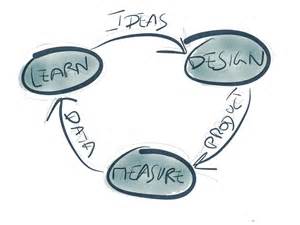
What is MVP?
Minimum Viable Product, is a technique in product development to develop a product with features enough to demonstrate the concept to the early adopters, i.e. a product with just the core features, nothing more.
The term was coined by Frank Robinson and popularized by Steven Blank and Eric Ries
The product concept is shared with the selected potential audience to gain early feedback and get a vision for the product from MVP to a full-fledged product.
MVP is a strategy to evaluate market potential of a product concept with validated inputs and minimum efforts, time and cost.
What benefits it brings in?
- The product concept is evaluated at early stage with known value among potential customers
- Minimum monetary and time investments
- It demonstrates the concept and future benefits to reserve the early adopters
- A feedback mechanism is evolved to plan the future developments
If the product concept turns to be a failure or less likely to be a success, not much harm is to be borne — only a small amount of investment was made.
But in case if it gets a green signal, you get enough time to plan for all the details and build a complete product with early feedback from market.
MVP Types
There are tons of options available for planning an MVP, I would like to mention here 5 of my favorites.
- Explainer Video
It is a short video that explains what the product does and why should people buy it. Often simple, with clean animations and lasting for around 90 seconds.
These videos when designed correctly always serve the purpose and gains more visibility and a potential source of feedback and crowd funding
2. Landing Page
It is a page where all the visitors “land” on click of any ad-link or email advertisements or any other campaigns. The core objective is to quickly communicate the product value and offerings.
It can even be called as a marketing practice, but is surely an MVP as well.
You can even add an “Explainer Video” to your landing page.
- Create a landing page build upon your interviews, surveys, product concept and development details
- Set up Google AdWord campaign to drive traffic to the landing page
- Set up Google Analytics to gain insights on page visits
- Provide chat support or a contact form to improve visitor engagement, let them start a conversation and share feedback
3. Wireframes
It is a technique to present the concept visually with minimum visual elements. If the target audience is creative or tech-savvy, who can really visualize the abstract concepts, the wireframes can turn out to be very helpful with minimum cash and time. A lot of tools are available to create sketchy wireframes such as “Balsamiq”.
4. Mockups
It is a technique to present the concept visually in an enhanced manner with more efforts invested on graphical/visual aspects. Mockups turn to be an appropriate choice for the audience with little chances of understanding the concepts with just verbal explanation.
Get started with an awesome tool such as “Sketch” to build a beautiful experience.
5. Prototypes
It is a technique that fits right for the audience who want to visualize, use and get the feel of the product to understand and evaluate better. The user can use the prototypes, press a button to know what will happen next, click on links, view pictures etc.
It is often required to take care that the audiences don’t get distracted by the overlays and images and have clear focus on product functionalities and features. “Axure” is a great tool to build extensive prototypes mocked similar to the planned product.
What MVP is not?
People often skip the “Viable” aspect from MVP product. MVP is often understood as “Minimum Product”, but it is not! This misconception often makes MVP as sloppy and hideous representation of the product.
Creating a half-baked product with buggy features and partial implementation is not called a MVP, it is a messy heap of the concept and is always counter productive.
The poorly created MVPs could potentially lead to negative market feedback, even for a splendid product concept!
Why you should go for MVP’s?
Spending tremendous amount of money and efforts in designing and developing a product only to find out after a release that no one wants or needs is not something you would crave for.
At the end what we want for our product is “success” and what we want from the product is “to generate sales”. Building MVP is a great option out there.
- Minimizes the time to develop the concept
- Accelerates learning
- Get the product early in the market and make it available to users to gain early investments or customers or words
- Serve as base for the product in further development
Correctly executed and planned MVPs are win-win opportunities whether they are accepted or not accepted in the market.
- They either save you from spending your hard-earned money and investing time, which could have been a waste, or
- They can give you a confidence in the success of the product to get fully involved in further planning — a sustainable product complete in design and development.
You’re selling the vision and delivering the minimum feature set to visionaries, not everyone.
- Steve Blank
Author: Surbhi Mahnot, Analyst
The article was originally published by surbhimahnot on Medium.com